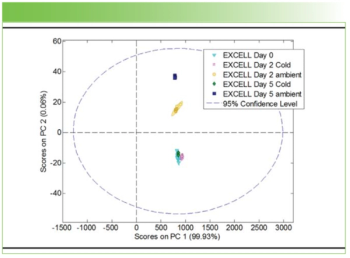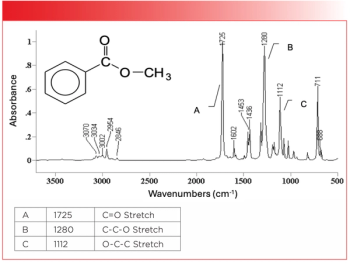
New Study Provides Insights into Chiral Smectic Phases
Researchers from the Institute of Nuclear Physics Polish Academy of Sciences have unveiled new insights into the molecular arrangement of the 7HH6 compound’s smectic phases using X-ray diffraction (XRD) and infrared (IR) spectroscopy.
A recent study published in Spectrochimica Acta Part A: Molecular and Biomolecular Spectroscopy examined the molecular arrangement of the 7HH6 compound. This study, which was led by Aleksandra Deptuch of the Institute of Nuclear Physics Polish Academy of Sciences, used X-ray diffraction (XRD) and infrared (IR) spectroscopy to investigate the chiral smectic phases of 7HH6. Collaborating with researchers from Jagiellonian University and the Military University of Technology, Deptuch explored how temperature variations influence molecular organization, providing fresh perspectives on phase transitions and glass formation in liquid crystals.
Smectic phases are a class of liquid crystal phases in which molecules exhibit both fluid-like properties and a degree of positional order (2). Unlike nematic liquid crystals, where molecules are only oriented in the same direction, smectic phases have molecules arranged in distinct layers, allowing for some translational order along one dimension (2). Because smectic phases can help researchers learn about glass formations in liquid crystals, material scientists are interested in learning more about them.
In their study, Deptuch and team investigated the four smectic phases of the 7HH6 compound. These four distinct smectic phases are SmA*, SmC*, SmCA*, and hexatic SmXA*. The research team was most interested in the supercooled state of the hexatic SmXA* phase, where an increased correlation length of positional short-range order suggested a potential hexatic structure (1). However, X-ray diffraction (XRD) patterns did not fully align with conventional hexatic phases, which propelled the researchers to conduct further analysis using molecular modeling and IR spectroscopy.
One aspect of this study was that the researchers investigated how smectic layer spacing and optical tilt angles correlate. Density Functional Theory (DFT) calculations were employed to refine molecular models, which were then used to interpret the IR spectra (1). The study found that the splitting of absorption bands related to C=O stretching was exclusive to the supercooled state, reinforcing the hypothesis of a hexatic SmFA* or SmIA* phase (1).
One of the important findings of this study was about temperature variations, and how these impact the smectic structure and molecular interactions. The research team observed subtle yet significant shifts in the smectic layer spacing during the glass transition, while the IR spectra remained largely unaffected (1). Using K-means cluster analysis, which is a statistical technique used to classify data patterns, allowed the team to distinguish between IR spectra above and below the glass transition temperature for specific spectral ranges (1).
Another key finding of this study was that the 7HH6 molecule does not form dimers within smectic layers. Instead, individual molecules serve as the fundamental building blocks, with their aromatic cores tilted at approximately 20–25° relative to the entire molecule (1).
A third important discovery in this study was that XRD analysis identified a key structural difference between the SmXA* and SmCA* phases. The SmXA* phase exhibited a larger smectic layer spacing than the SmCA* phase, indicating distinct molecular arrangements (1). Additionally, a third C=O stretching band was detected in the SmXA* phase but was absent in SmCA*, suggesting the involvement of weak hydrogen bonds in certain smectic phases (1).
Finally, the researchers noticed the correlation length of positional short-range order in the SmXA* phase, which extended only to the next-nearest neighbors. This was greater than in the SmCA* phase, where correlations were limited to nearest neighbors, which highlights the unique molecular interactions in different smectic phases (1).
The findings from this study deepen our understanding of smectic phase transitions and molecular interactions in liquid crystals. By employing advanced spectroscopic techniques and computational modeling, the research highlights the complexities of molecular behavior in chiral smectic phases (1).
References
- Deptuch, A.; Gorska, N.; Baran, S.; Urbanska, M. Structural and Dynamical Investigation of Glassforming Smectogen by X-ray Diffraction and Infrared Spectroscopy Aided by Density Functional Theory Calculations. Spectrochimica Acta Part A: Mol. Biomol. Spectrosc. 2025, 330, 125723. DOI:
10.1016/j.saa.2025.125723 - University of Houston, Introduction to Liquid Crystals. UH.edu. Available at:
https://uh.edu/~chembi/liquidcrystals.pdf (accessed 2025-03-28).
Newsletter
Get essential updates on the latest spectroscopy technologies, regulatory standards, and best practices—subscribe today to Spectroscopy.




